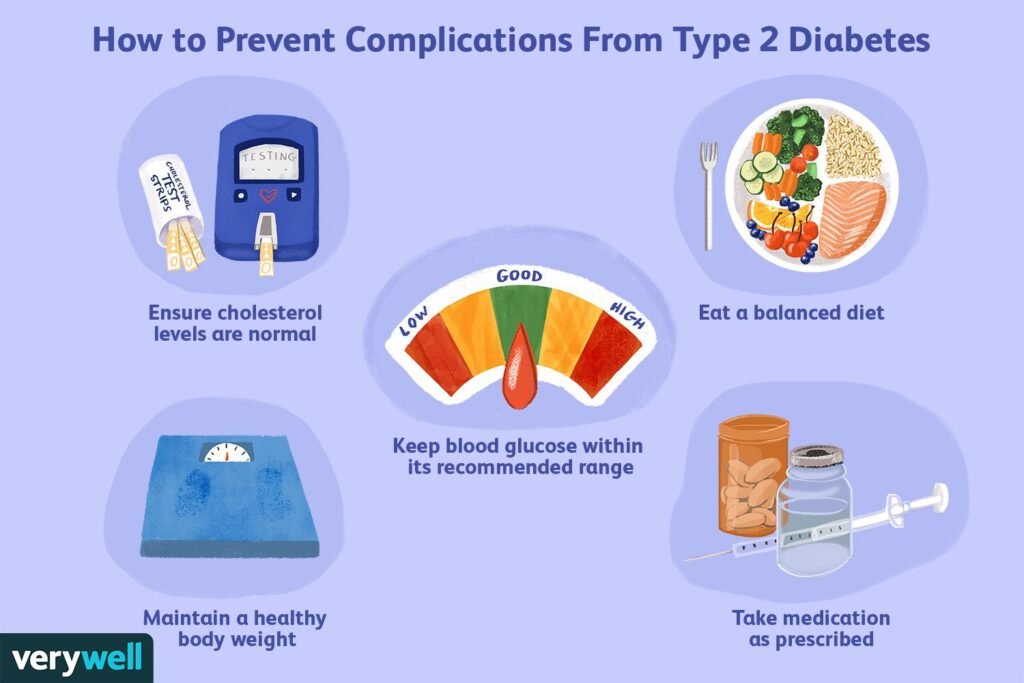Contents
Introduction
Diabetes is a chronic condition that affects millions of people worldwide. It is characterized by high blood sugar levels and can lead to serious health complications if not managed properly. While lifestyle changes such as diet and exercise play a crucial role in diabetes management, medications are often necessary to help control blood sugar levels. In this article, we will explore the various options and considerations when it comes to managing diabetes with medications.
Types of Diabetes Medications
There are several different types of medications available to help manage diabetes. These medications work in different ways to lower blood sugar levels and may be prescribed alone or in combination with other drugs. The main types of diabetes medications include:
1. Insulin

Insulin is a hormone that helps regulate blood sugar levels. People with type 1 diabetes, as well as some with type 2 diabetes, require insulin therapy to control their blood sugar levels. Insulin can be injected using a syringe, insulin pen, or insulin pump. There are different types of insulin available, including rapid-acting, short-acting, intermediate-acting, and long-acting insulin. The type and dosage of insulin needed will depend on individual factors such as age, weight, and lifestyle.
2. Metformin

Metformin is an oral medication that is commonly prescribed as a first-line treatment for type 2 diabetes. It works by reducing the amount of glucose produced by the liver and improving the body’s response to insulin. Metformin is usually taken with meals and is often prescribed in combination with other diabetes medications.
3. Sulfonylureas
Sulfonylureas are a class of oral medications that stimulate the pancreas to produce more insulin. They work by increasing the release of insulin from the beta cells in the pancreas. Sulfonylureas are typically taken once or twice a day before meals. Examples of sulfonylureas include glipizide, glyburide, and glimepiride.
4. Thiazolidinediones
Thiazolidinediones, also known as TZDs or glitazones, are oral medications that help improve insulin sensitivity and reduce insulin resistance. They work by increasing the body’s sensitivity to insulin, allowing it to use glucose more effectively. TZDs are usually taken once or twice a day with meals. Common examples of TZDs include pioglitazone and rosiglitazone.

5. DPP-4 Inhibitors
DPP-4 inhibitors are a class of oral medications that help lower blood sugar levels by blocking the action of an enzyme called DPP-4. This enzyme breaks down incretin hormones, which stimulate insulin release and reduce glucagon secretion. By inhibiting DPP-4, these medications increase the levels of incretin hormones, leading to better blood sugar control. Some commonly prescribed DPP-4 inhibitors include sitagliptin, saxagliptin, and linagliptin.
6. SGLT2 Inhibitors
SGLT2 inhibitors are a newer class of oral medications that work by blocking the reabsorption of glucose in the kidneys, allowing it to be excreted in the urine. This helps lower blood sugar levels and can also lead to weight loss. SGLT2 inhibitors are usually taken once a day with or without food. Examples of SGLT2 inhibitors include canagliflozin, dapagliflozin, and empagliflozin.
Considerations when Choosing Diabetes Medications
When choosing diabetes medications, several factors need to be taken into consideration. These include:
1. Type of Diabetes
The type of diabetes a person has will influence the choice of medications. For example, people with type 1 diabetes will require insulin therapy, while those with type 2 diabetes may be prescribed oral medications, insulin, or a combination of both.

2. Blood Sugar Control
The level of blood sugar control needed will also impact the choice of medications. Some people may require more aggressive treatment to achieve target blood sugar levels, while others may only need mild to moderate intervention.
3. Other Health Conditions
It’s important to consider any other health conditions a person may have when selecting diabetes medications. Some medications may interact with other drugs or be contraindicated in certain conditions. For example, some diabetes medications may not be suitable for people with kidney or liver disease.
4. Side Effects
Each diabetes medication has its own set of potential side effects. It’s essential to discuss these with a healthcare provider to ensure that the benefits outweigh the risks. Common side effects of diabetes medications include gastrointestinal upset, weight gain, and hypoglycemia (low blood sugar).
5. Lifestyle Factors
Lifestyle factors such as diet, exercise, and personal preferences should also be considered when choosing diabetes medications. Some medications may require specific dietary restrictions or have an impact on physical activity levels.

Conclusion
Managing diabetes with medications is an important part of diabetes care. The choice of medications will depend on individual factors such as the type of diabetes, blood sugar control needs, other health conditions, potential side effects, and lifestyle factors. Working closely with a healthcare provider is essential to determine the most appropriate medications and develop a comprehensive diabetes management plan.





